Have you ever wondered what kind of grass do I have in my yard?
Most people aren’t aware that there are many different grass types in PA. Even right here in the Lehigh Valley, lawns differ more than a lot of people realize. But knowing what type of grass your yard is made up of can help you ensure you’re nurturing it as best as you can.
Making the best decisions for your lawn always starts with identification. That’s why we’re talking about what kinds of grass are popular in PA and what you might have in your own backyard.
What Kind of Grass Do I Have?
Grasses utilized in Pennsylvania lawns consist primarily of cool season grasses. Here in the Lehigh Valley, there are 4 types of grass that we see most often. Chances are, you have one (or a combination) of these 4 grasses.
Kentucky Bluegrass
This is an attractive species that is commonly used for residential lawns. It has a medium to fine leaf texture and a medium to dark green color. In general, bluegrass is known for being dense, lush, and durable.
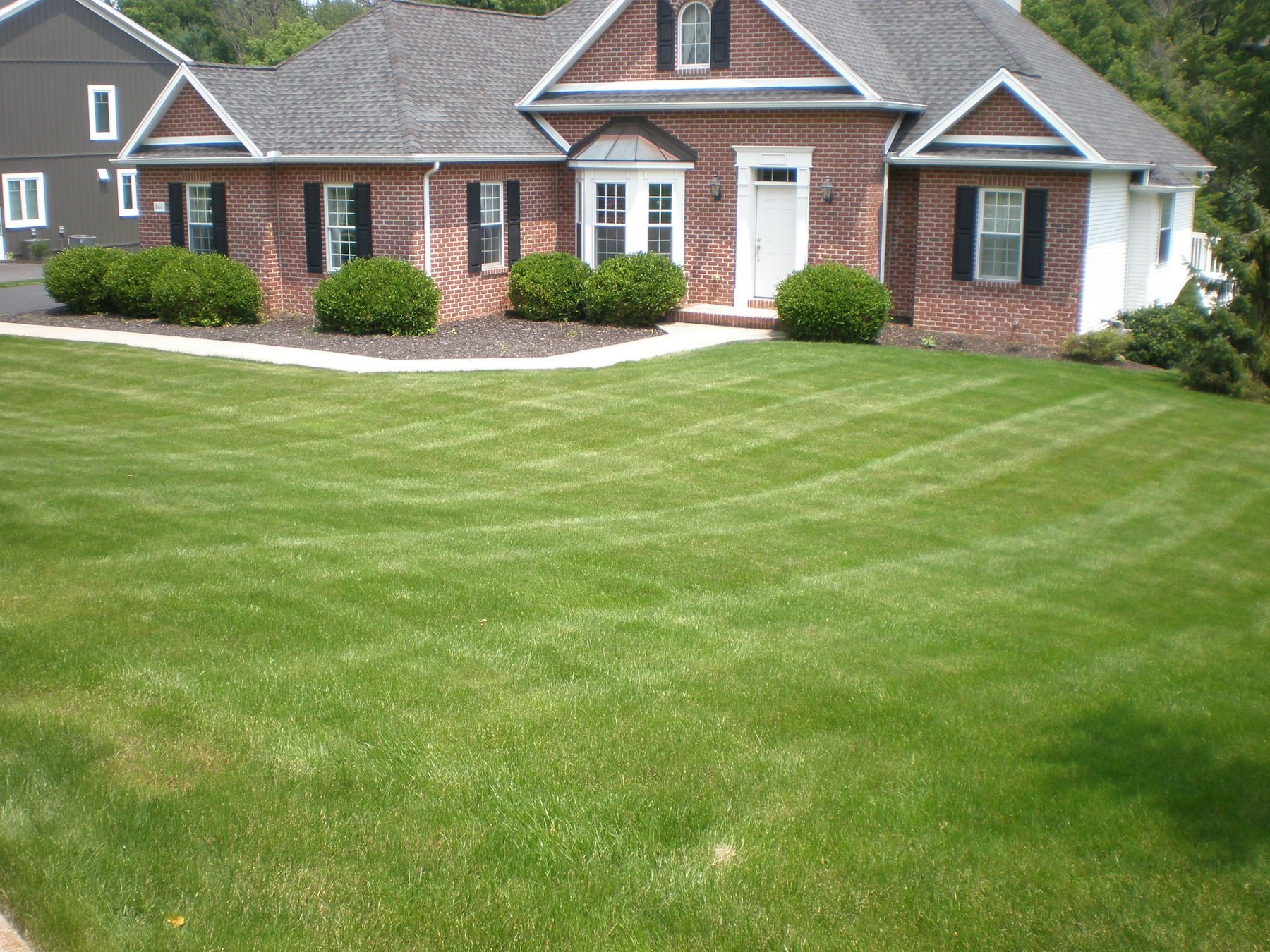
(Image courtesy of Peter Landschoot, Ph.D, Penn State University)
It performs best in well-drained soils and open, sunny areas. Kentucky Bluegrass thrives in a soil pH between 6.0 and 7.0.
Perennial Ryegrass
This grass type is known to be dark-green and fine to medium-textured. It is best-known for its fast germination rate. Perennial Ryegrass spreads slowly and naturally grows in clumps. It is considered to be relatively hardy and disease-resistant.
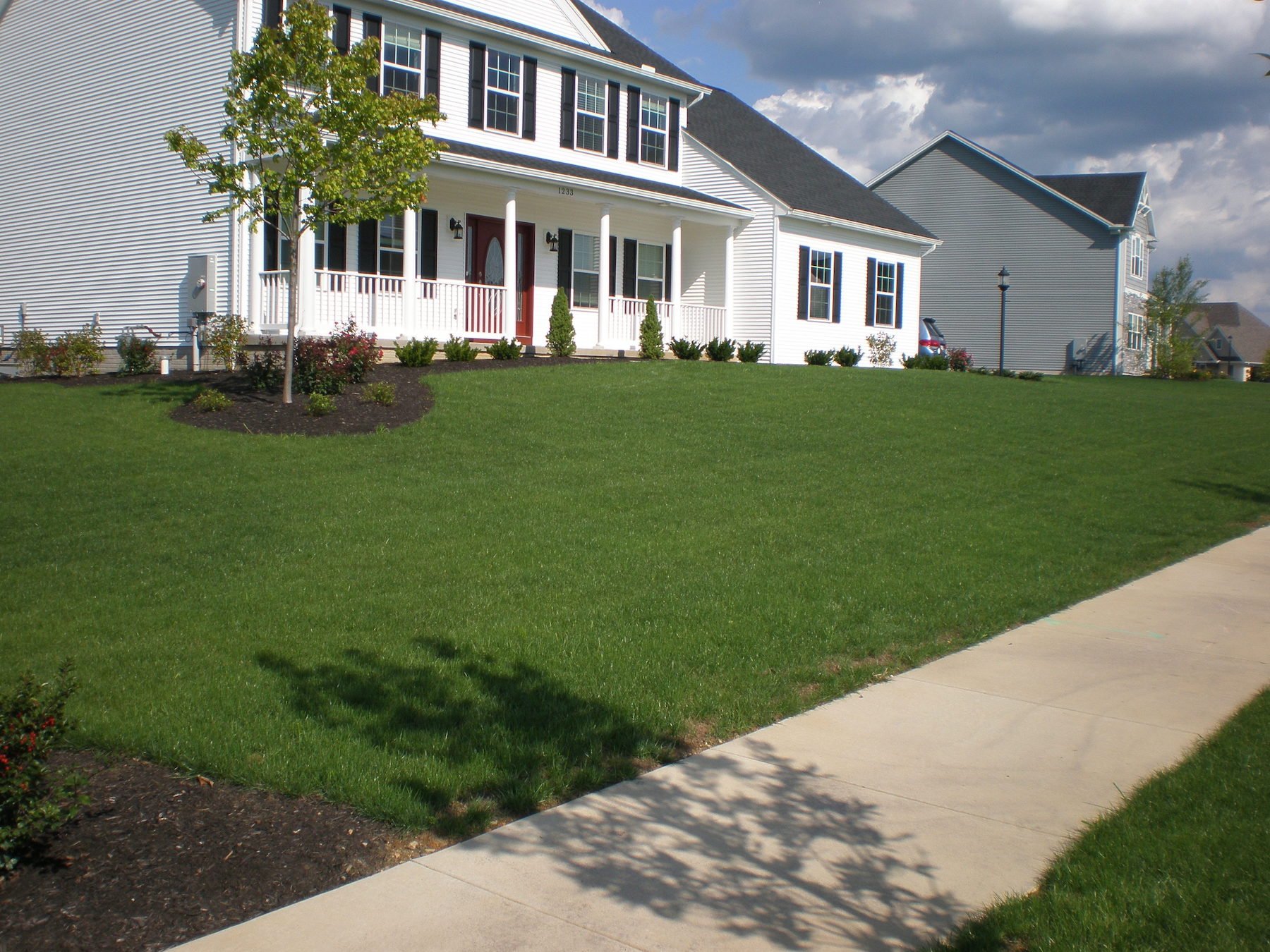
(Image courtesy of Peter Landschoot, Ph.D, Penn State University)
Perennial Ryegrass does have relatively high fertilizer and watering needs when it comes to maintaining its dark green color. It performs best in a soil pH of 5.5 to 7.5.
Fine Fescue
Fine Fescue grasses are made up of several varieties, the most common being Creeping Red Fescue. Fine Fescue is relatively low maintenance and produces an attractive medium-green to dark-green lawn.
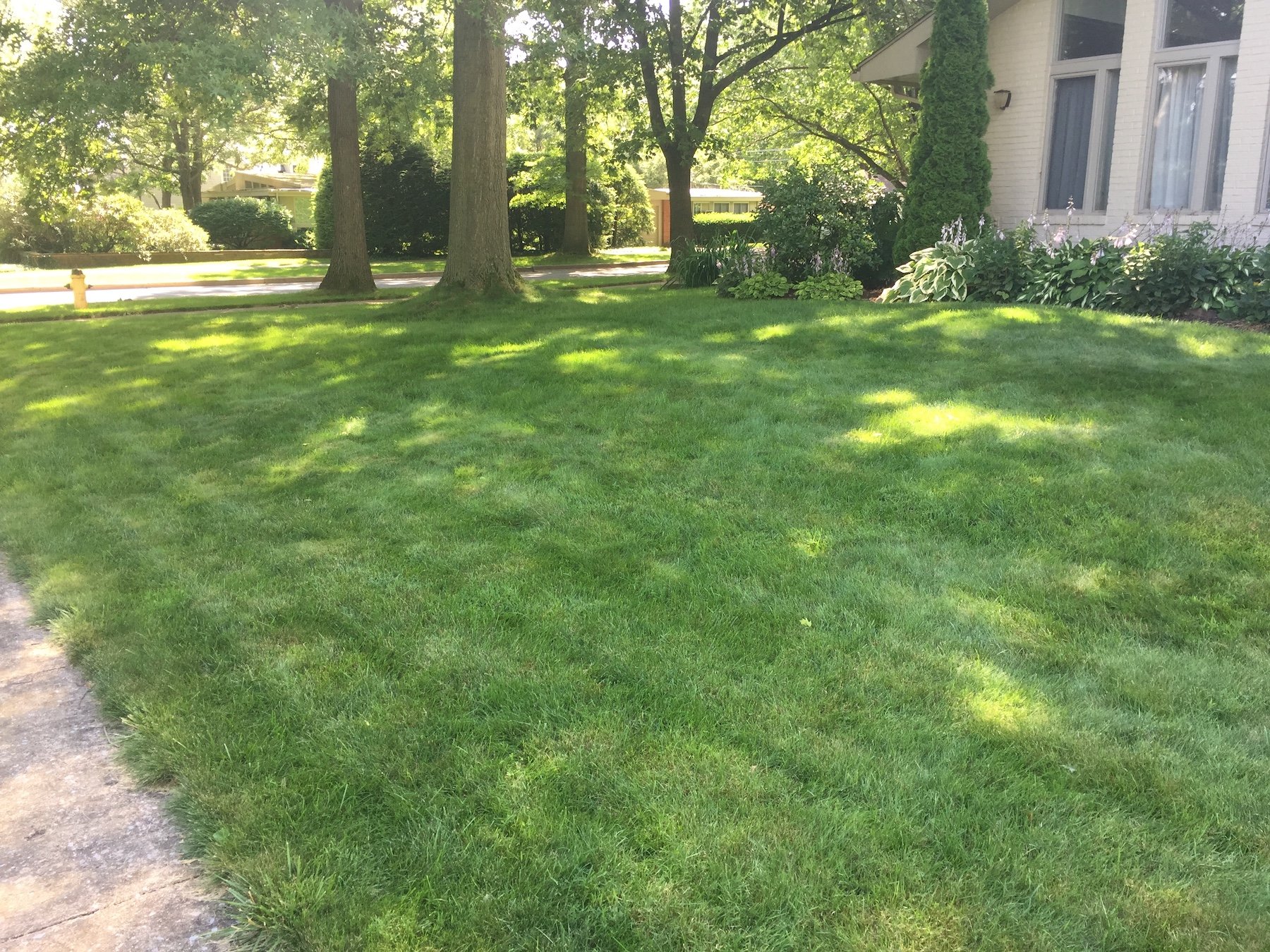
(Image courtesy of Peter Landschoot, Ph.D, Penn State University)
They are highly fine-textured, as their name would imply. Most Fine Fescue grasses prefer dry soil, though Creeping Red will do okay in moist soil. Fine Fescues also do best in a more acidic soil pH ranging from 5.5 to 6.0. This species is most often used in shaded areas.
Turf Type Tall Fescue
The new cultivars of Turf Type Tall Fescue have a desirable rich green color and are more drought-tolerant than many other lawn grasses as a result of the roots penetrating deeper into the soil.
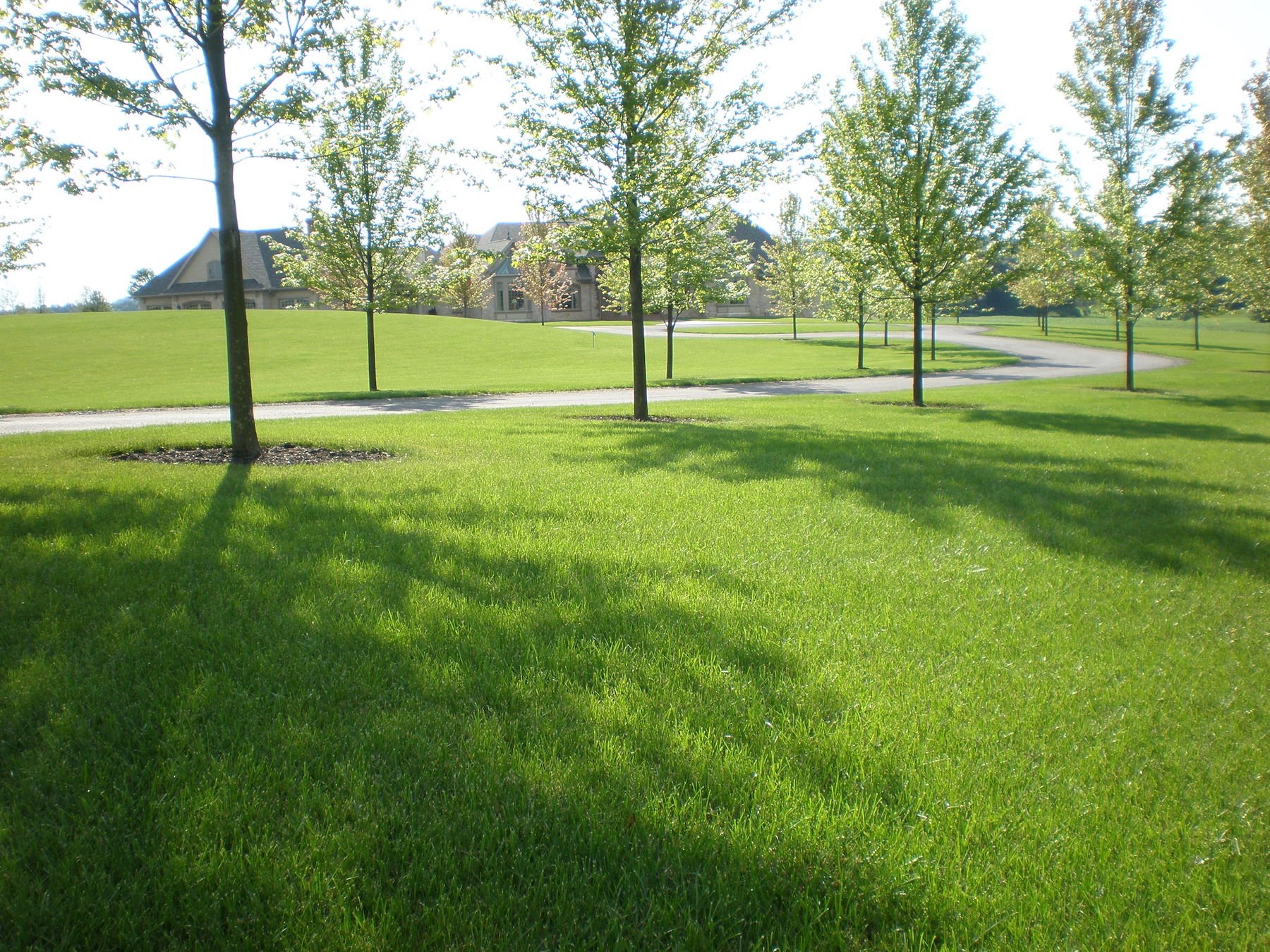
(Image courtesy of Peter Landschoot, Ph.D, Penn State University)
This turf type has been determined to work well for soil conditions in Allentown, Bethlehem, and Easton, PA.
What is the Best Grass Type in PA?
Of the different grass types, Joshua Tree would recommend that final grass type, Turf Type Tall Fescue, as the best choice. When we perform overseeding services, this is the grass type that we are using.
Specifically, we utilize a blend that is much higher quality than anything you would purchase in a big box store. This means we’re not just planting weeds in your lawn that you’ll have to deal with later.
Unwanted Grass Types in PA
When trying to figure out what kind of grass do I have, we know that you might also have undesirable grasses in your lawn. Unfortunately, there are grassy weeds that also commonly grow in Lehigh Valley yards and it’s quite possible you might have some of these unwanted grasses as well.
Some of these unwanted grassy weeds are seasonable and can be treated selectively while others cannot. Let’s look at some examples of common controllable grassy weeds as well as uncontrollable ones that are found here in the Lehigh Valley.
Controllable Grassy Weeds
- Crabgrass: This grassy weed emerges in thinned out areas of the lawn and grows in unsightly clumps. Though aggressive, crabgrass can be addressed with a combination of pre-emergent controls to prevent growth as well as post-emergent controls for breakthrough.
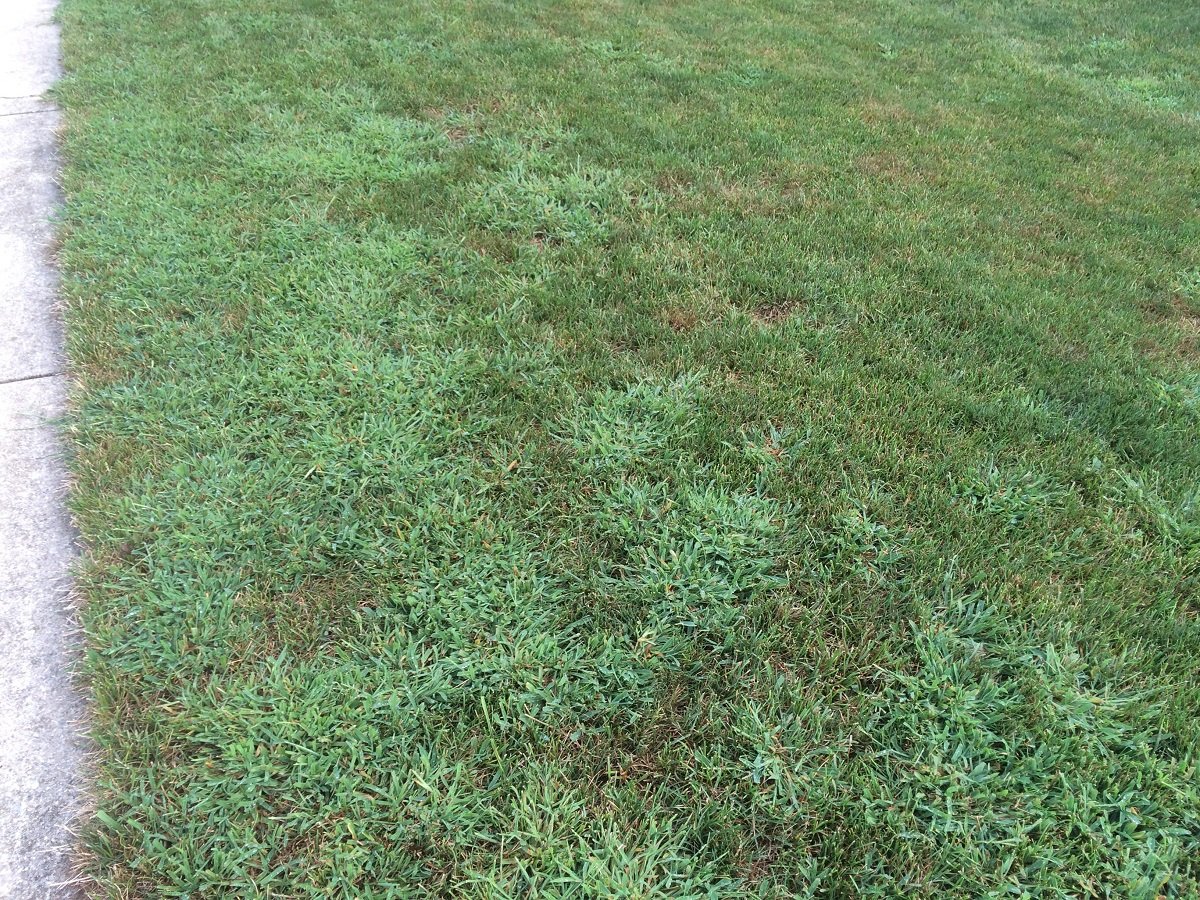
- Nutsedge: This perennial weed tends to pop up in moist areas of the lawn and can grow rapidly during periods of warm weather. Nutsedge often sticks out much higher than the rest of your lawn as it grows as much as 5 times faster. It is best addressed with specialty controls and often requires multiple rounds of treatment.
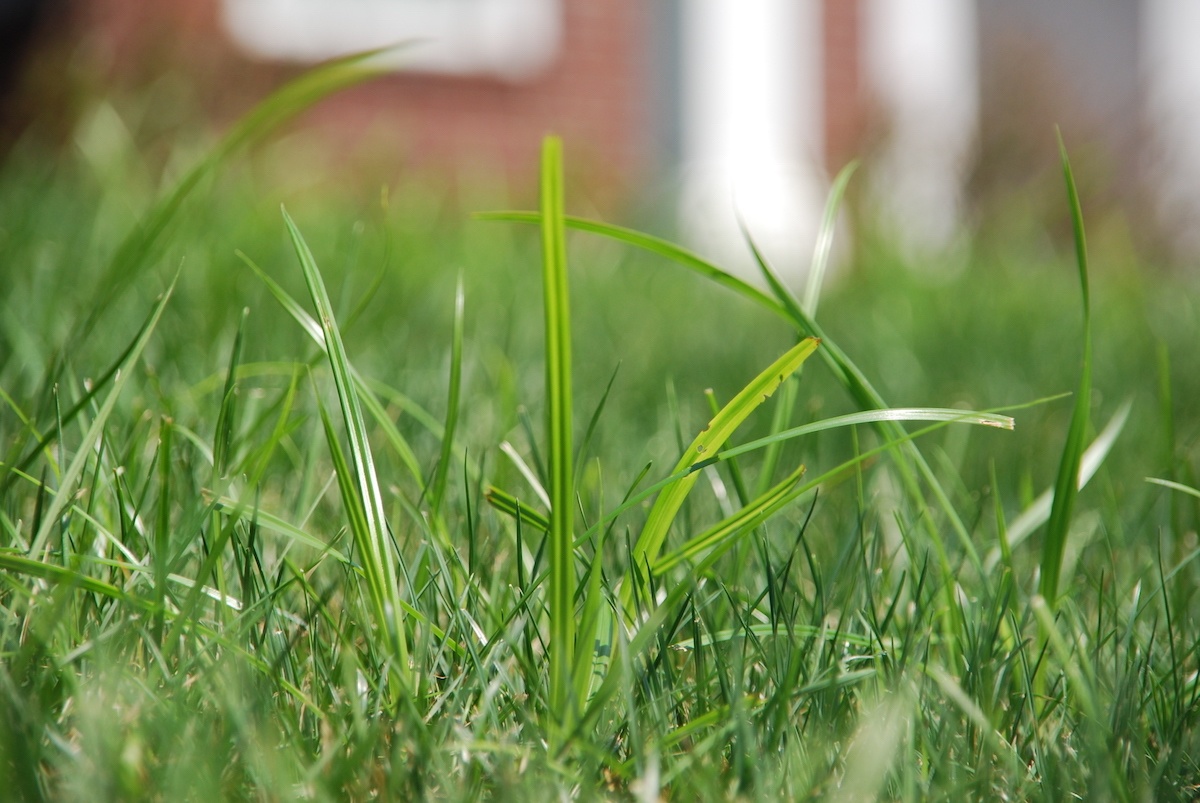
Uncontrollable Grassy Weeds
- Rough Bluegrass: Rough Bluegrass is lighter in color than desirable Kentucky Bluegrass and therefore identified as a weed. It’s most noticeable in the early spring when it is rapidly growing and also in mid-summer when it declines due to heat.
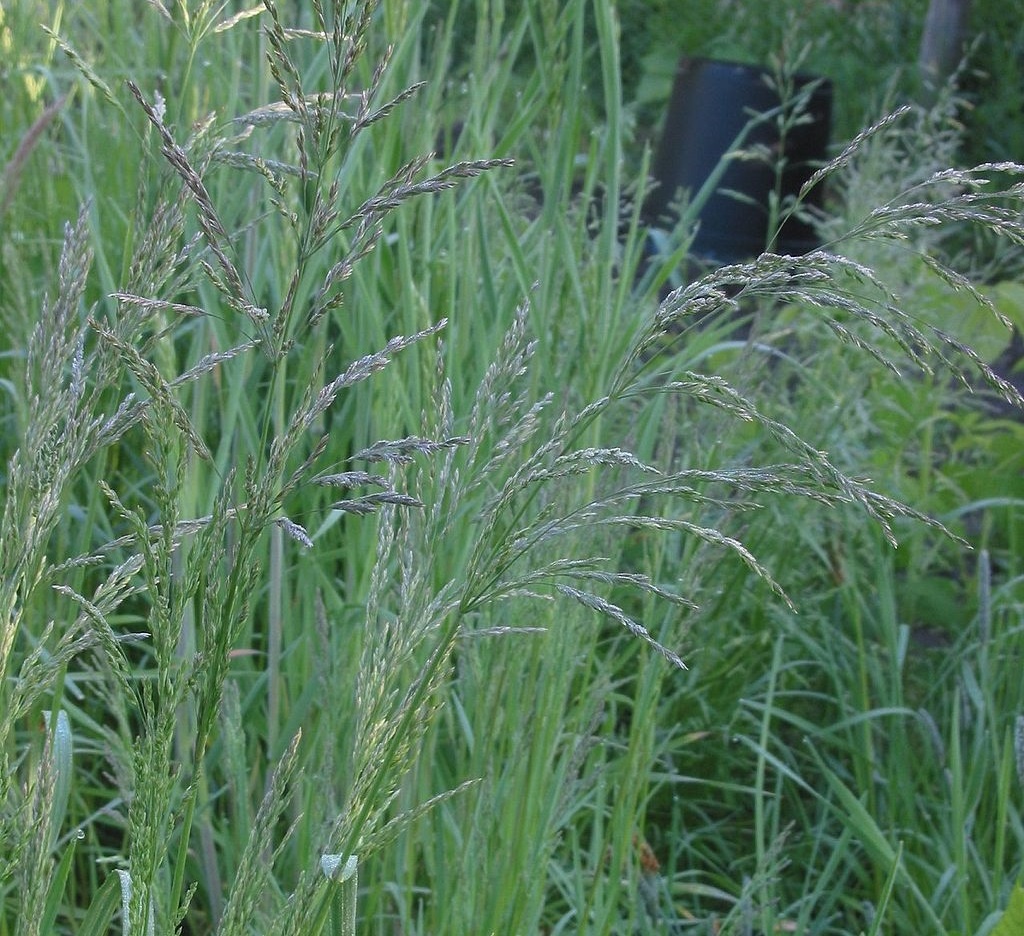
- K31 Tall Fescue: K31 or “Kentucky 31” is a perennial grass that makes a poor lawn grass as it often grows in clumps. Unlike the desirable species of tall fescue, this grass is coarse and wide-bladed. This species sticks around all year long.
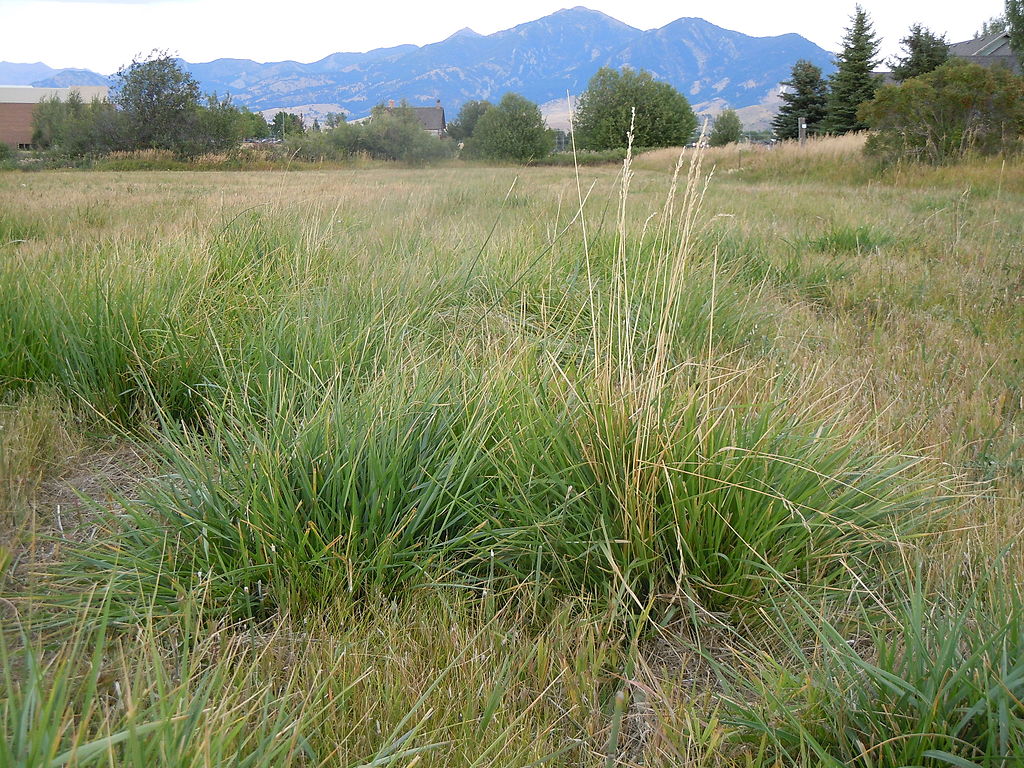
- Orchardgrass: This perennial cool-season grass can disrupt the overall appearance of the lawn due to its light-green and even bluish-green color. It typically is more noticeable in early spring.
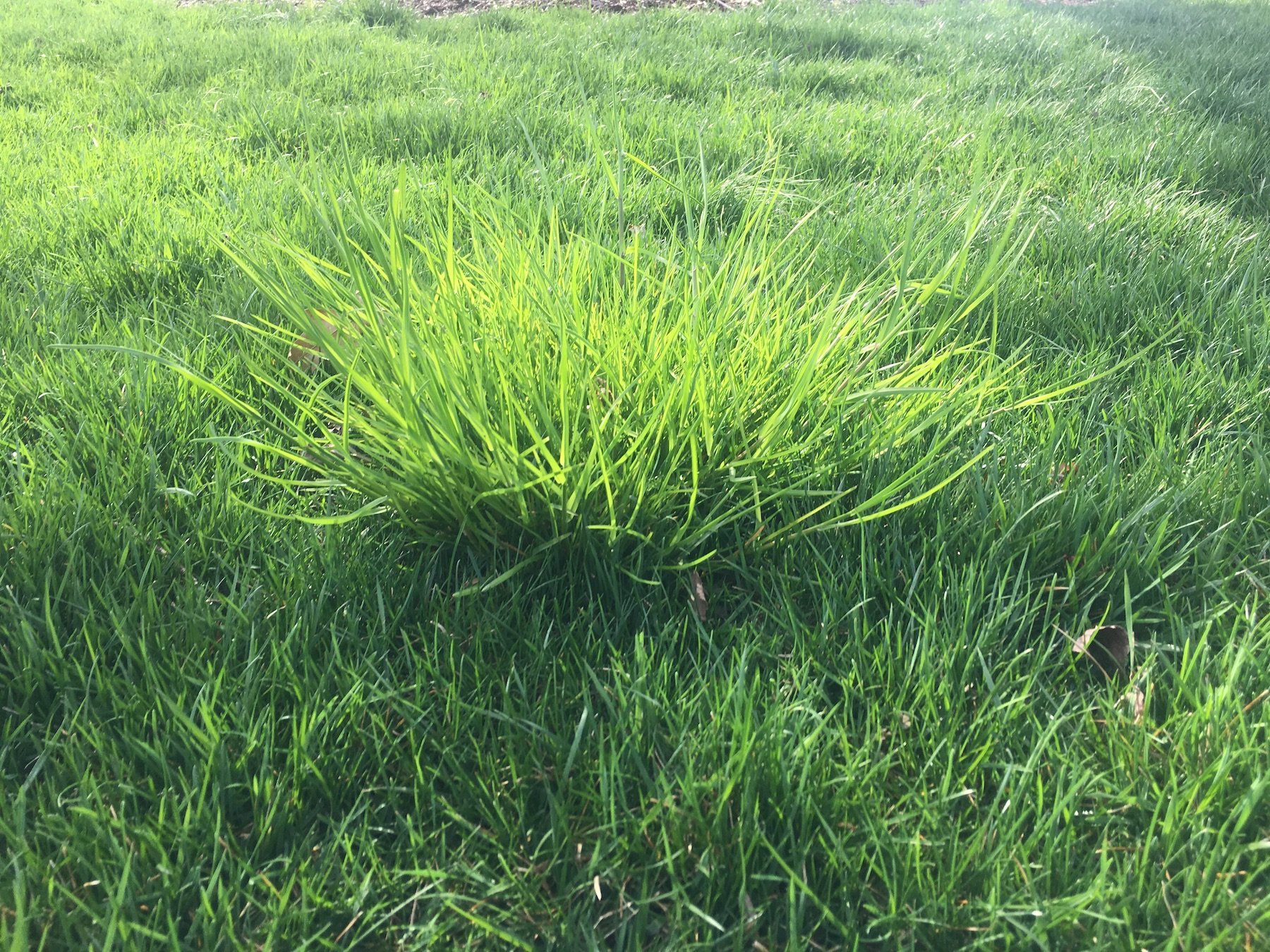
Sometimes, these unwanted grasses will just die off on their own. If you keep up with annual aeration and overseeding, continually adding desirable new grass seed each time, you’ll definitely see a difference over time. Aeration and overseeding has transformed some of the worst lawns. In time, it will strengthen your lawn’s natural defense mechanism by thickening it up and choking out unwanted grass types.
Of course, we can make recommendations on a case-by-case basis.
If your lawn is completely overrun with unwanted and uncontrollable grasses, we could always perform more of an overhaul by tearing up those unwanted grasses and essentially starting from scratch. But we find that most homeowners (even those with a “terrible lawn”) are pleased to see just how effective aeration and overseeding can be if you give it some time.
How to Best Care for My Specific Grass Type
Caring for lawns and fully meeting all of their needs is a complex endeavor. It definitely begins by first identifying what type of grass your lawn is primarily composed of. As we mentioned earlier, different turf types do have different recommendations for their optimal care.
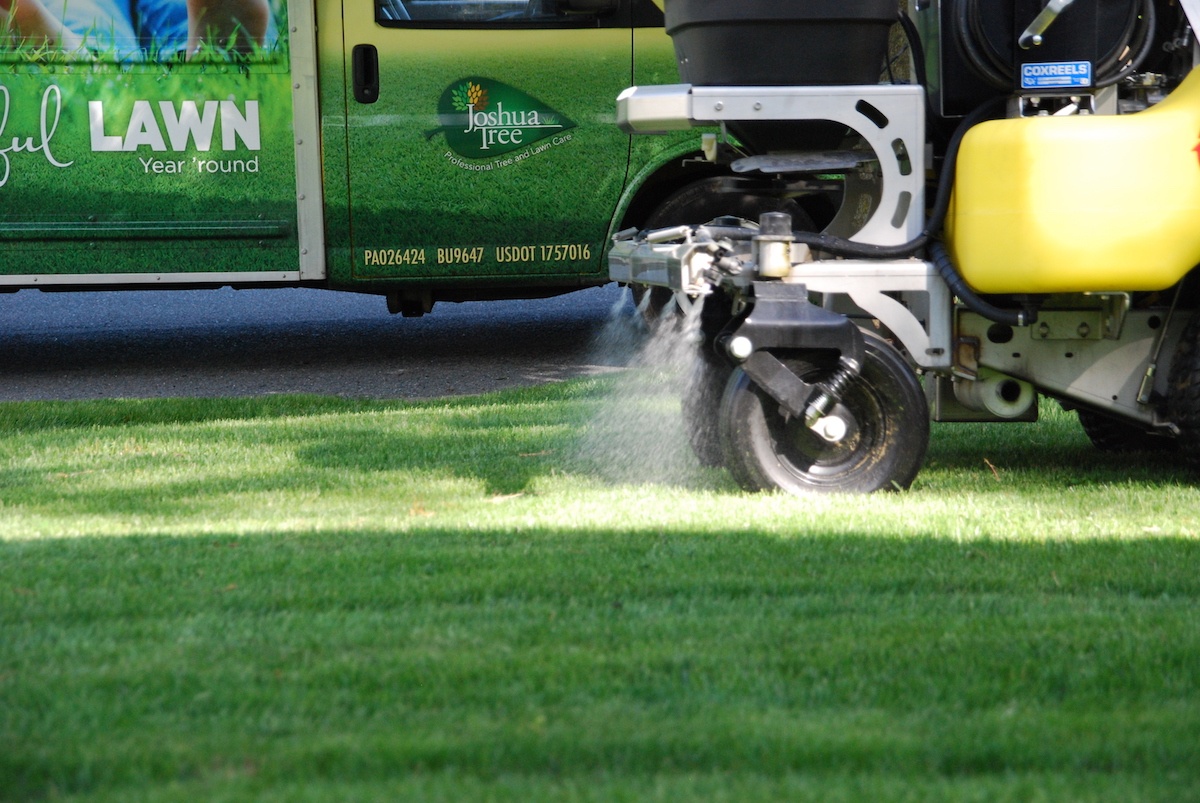
Of course, that being said, most lawns in the Lehigh Valley are made up of a variety of grass types.
This is important to recognize as the best practices for most lawns will be determined as what you might think of as an “average.” A trained lawn care technician will take into account the different grass types that comprise your lawn and what the recommendations are for those different types. This will help determine the best plan for success as we obviously can’t mow some of the lawn one height and others a different height. And we can’t fertilize certain areas of the lawn at different rates.
By partnering with a professional lawn care company in Allentown, Bethlehem, or Easton, PA, you can at least feel confident that all of this information is being taken into account and the best possible plan is being put into action.
Partnering with Joshua Tree for the Best Results
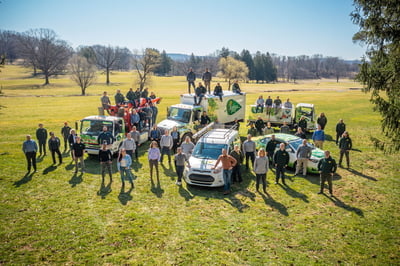 In the end, having the best lawn comes down to a variety of efforts. You want to choose a lawn care company that can take a few really important steps including the following.
In the end, having the best lawn comes down to a variety of efforts. You want to choose a lawn care company that can take a few really important steps including the following.
- Being able to identify the types of grass you already have in your lawn and how it is best cared for.
- Being able to address the undesirable grass types of your yard (like crabgrass and nutsedge) and initiate effective approaches to get rid of them.
- Seeding with the best grass seed (and best grass type) so that you fill your lawn with healthy grass that is going to perform optimally here in the Lehigh Valley.
- Utilizes ongoing lawn care methods that will take the best possible care of the existing grass as well as the new grass being established through overseeding.
There’s a lot involved in all of that but with the right lawn care company, you’ll know that you’re covered from the seeding stage all the way through to the ongoing care. Because of that, you’ll gain the confidence that your lawn is getting what it needs no matter what.
If you’d like to find out more about our three lawn care program options so that your lawn can receive the best possible care, contact us for a free consultation or give us a call at 833-583-8733 so that we can answer any questions.
Image sources: rough bluegrass, Grass species images used by permission from Peter Landschoot, Ph.D, Penn State University




